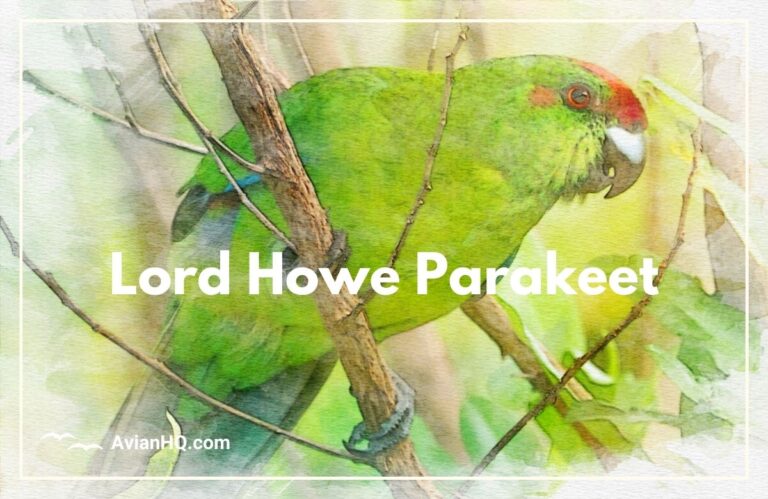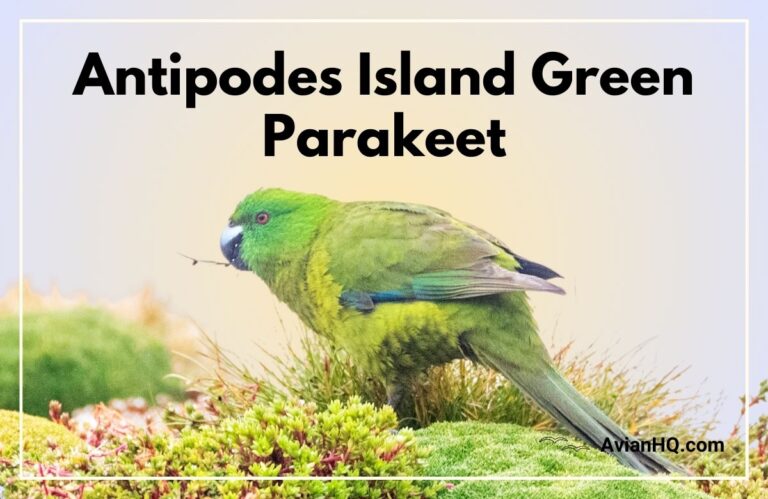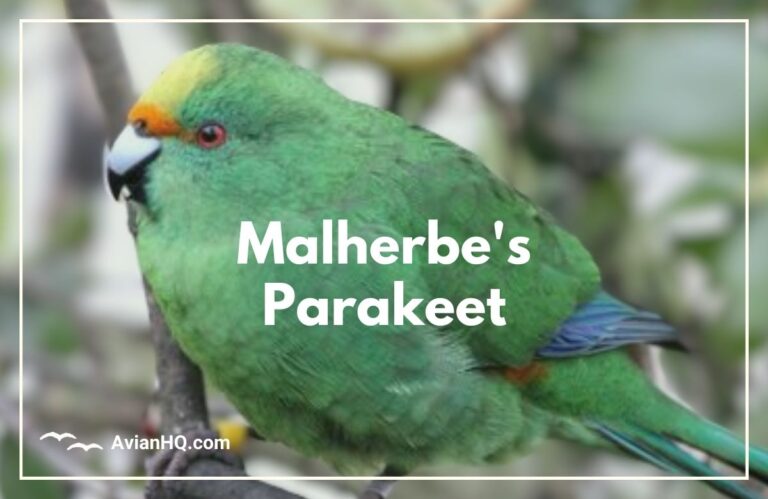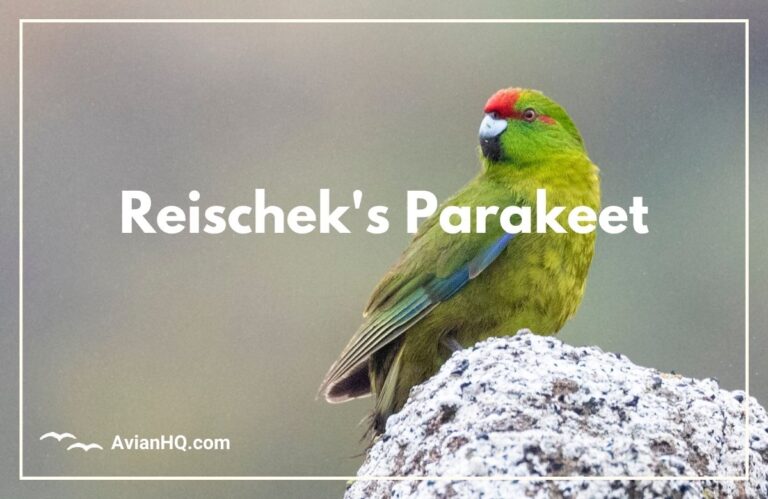Genus: Cyanoramphus
Parakeets of the genus Cyanoramphus can be found across the islands of New Zealand and into the southwest Pacific, captivating bird enthusiasts with their bright plumage and fun-loving personalities. You’ll discover that these pint-sized parrots exhibit amazing intelligence for their small size. Sadly, many Cyanoramphus species also face serious threats in the wild. Learning more about these special birds can help drive important conservation efforts.
“Cyanoramphus parakeets showcase the best qualities of parrots – beauty, brains, and unmatched charm.”
This guide will spotlight key species in the Cyanoramphus genus. You’ll learn to tell them apart by their vibrant yellow, red, green, and orange head plumage. Diving deeper, we’ll explore the habitats these parakeets call home and some of their unique behaviors in the wild. For example, did you know that the Red-crowned Parakeet forms life-long monogamous bonds with its mate?
Unfortunately, various Cyanoramphus species struggle with survival as forests are logged and non-native predators are introduced in their home ranges. Protecting these intelligent and lively birds is an urgent priority. That’s why we’ll also cover current conservation projects across New Zealand focused on habitat restoration and captive breeding programs. With persistence and care, some of the world’s rarest parrots can be saved by human action.
Whether you’re an ornithology buff or simply love vibrant birds, the diverse Cyanoramphus genus offers amazing insights. Let’s explore what makes these parakeets so special!
Species Spotlights
Yellow-crowned Parakeet
The aptly named Yellow-crowned Parakeet sports a vibrant yellow head crest with olive-green body feathers. Growing just under 12 inches (30 cm) long, its one of larger members of the Cyanoramphus genus.
This parakeet prefers forest habitat across New Zealand’s North Island and surrounding small islands. The species mainly eats fruit and blossoms, supplemented by seeds, buds, and the occasional insect snack.
Forming monogamous breeding pairs, Yellow-crowned Parakeets nest in tree hollows. The females lay between 4-7 eggs. Both parents incubate the eggs and care for the hatchlings.
While still relatively common, Yellow-crowned Parakeet numbers have declined from habitat loss. Work to regenerate native forest habitats is underway to secure future populations.
Norfolk Parakeet
If you spot a bright red head crest, you’re likely looking at New Zealand’s Norfolk Parakeet. Growing just over 9 inches (25 cm) in length, this small parrot once held “world’s rarest” status with only 30-40 birds remaining in the 1970s.
Today, the outlook is brighter for the Norfolk Parakeet. Targeted recovery efforts brought the population up to over 800 birds by 2016. These parakeets now inhabit forested areas of Norfolk Island after being wiped out there in the 1800s by settlers.
Key threats still remain, especially competition for nest sites with crimson rosellas – introduced parrots. Providing man-made next boxes has aided breeding significantly. Like other Cyanoramphus species, Norfolk Parakeets create life-long bonds between mates to raise young together in tree hollows or nest boxes.
Macquarie Parakeet
With bright orange-red heads and green wings, Macquarie Parakeets stand out even among their colorful Cyanoramphus cousins. These parakeets reach just under 9 inches (22 cm) in length.
Today, only around 130 Macquarie Parakeets exist in their limited island habitat between New Zealand and Antarctica. Competition with invasive species plus uncontrolled hunting drove the species perilously close to extinction.
Thanks to recent protections and captive breeding efforts by conservation groups, tiny Macquarie Island finally has wild parakeets soaring its skies again after 30 years absence. More habitat restoration and monitoring must continue to secure the future of this exceptionally rare bird.
Forbes’ Parakeet
Forbes’ Parakeet marks the only Cyanoramphus species to not have a native range around coastal New Zealand. Instead, subalpine scrubland in New Zealand’s South Island interior provides prime habitat for the brightly-colored parakeet distinguished by vibrant orange cheeks.
By the 1990s, habitat loss and predation cut Forbes’ Parakeet numbers to less than 300 birds. An intense recovery program of captive breeding and predator control boosted the wild population to over 1,000 by 2019. Still, the species remains at risk if conservation management declines.
Reischek’s Parakeet
Reischek’s Parakeet makes its home on small islands off northern New Zealand. Yellow crown feathers help identify the species. With less than 1,300 mature birds, threats from deforestation and introduced predators means populations are declining.
Focused habitat protection efforts seek to reverse the downward trend. Responsible public environmental stewardship offers the best hope for stable future growth. As with many Cyanoramphus species, success often starts with conservation support at the local community level.
Malherbe’s Parakeet
Malherbe’s Parakeet makes its home on forests across New Caledonia’s main island and several smaller surrounding islands. Their bright red beaks and green wings with hints of blue make them stand out.
While still relatively abundant compared to other Cyanoramphus species, habitat loss does pose a threat for the estimated 10,000 remaining mature Malherbe’s Parakeets. Responsible land development and forestry practices can allow both economic growth and conservation of these parakeets’ forest ecosystems.
Red-crowned Parakeet
With vibrant red head plumage, you can’t miss New Zealand’s famous Red-crowned Parakeet. Growing just over 8 inches (22 cm) in length, they thrive across both main islands and some coastal islets.
Red-crowned Parakeets form monogamous bonds for life, cooperating to raise multiple broods. Nests often reuse existing hollows in trees. Hatchlings leave the next at 6-7 weeks old.
While still common in suitable habitat, monitoring deforestation and non-native predators helps ensure stable future population levels estimated between 50,000-100,000 mature birds. Responsible public environmental stewardship offers the best hope for stable growth.
New Caledonian Parakeet
The New Caledonian Parakeet inhabits multiple small islands off the coast of New Caledonia, feeding on fruit and nectar in native forests. Their bright red tail feathers and orange-yellow wing panels make identification easy.
With between 3,500-15,000 mature individuals left, habitat protection is crucial for these parakeets’ future. Vigilance against illegal smuggling for the pet trade also helps curb external threats. Responsible local conservation action from communities and tribal groups offer the best protection.
Lord Howe Parakeet
The brightly colored Lord Howe Parakeet once populated both Lord Howe Island and nearby Ball’s Pyramid in the Tasman Sea. Intensive hunting and predation by invasive rats left only 20-30 birds on Ball’s Pyramid by 2001.
Thanks to a captive breeding program with offspring reintroduced to Lord Howe Island, this rare Cyanoramphus species has been nursed back from the brink once more. Continued monitoring and rat control now supports a growing population of over 200 parakeets by recent counts!
Antipodes Island Green Parakeet
Way down between New Zealand and Antarctica you’ll discover Antipodes Island, home to the vibrant green Antipodes Island Green Parakeet. The world’s most southerly parrot species, these parakeets sport olive-yellow wing and tail feathers.
Invasive mice, brought by sailors long ago, threaten eggs and compete for food. An ambitious 2021 conservation initiative succeeded in eradicating every last mouse on the island. Early monitoring suggests parakeet numbers are already rebounding thanks to flourishing vegetation.
Subantarctic Parakeet
Recent genetic research suggests that the Subantarctic Parakeet may constitute a newly distinguished member of the Cyanoramphus genus. Previously considered a sub-species of Red-crowned Parakeet, these small bright green parakeets with red beaks and feet inhabit the remote Auckland and Snares Islands south of mainland New Zealand.
With limited data available, assessing the size and stability of the Subantarctic Parakeet population proves difficult. Their remote island ecosystems require diligent biosecurity measures and monitoring to keep this potential new species secure.
Behavior and Intelligence
The parakeets of the Cyanoramphus genus share many common behaviors rooted in their high levels of intelligence. You’ll discover these birds demonstrate complex social structures and group problem solving skills much like their larger parrot cousins.
Social Structure
Cyanoramphus parakeets form close lifelong bonds between mating pairs. You’ll often see pairs grooming each other, vocalizing back and forth, or foraging together. In some species like the Red-crowned Parakeet, pairs remain monogamous for life, cooperating to raise multiple broods.
Groups often gather at prime food sources or choice nesting sites, with identifiable hierarchies where dominant pairs claim priority access. Still, these social parakeets groom each other and share space cooperatively.
Communication
Using a repertoire of squawks, chirps, small imitations, and physical displays like spreading wings and bobbing heads, Cyanoramphus parakeets have complex language. Pitch, tempo, and tone alter meaning. Paired birds may have specific calls just between each other.
Intelligence and Problem Solving
In laboratory tests comparing numerous parrot species’ cognitive abilities, members of the Cyanoramphus genus repeatedly show high levels of intelligence. Their brains can solve problems, learn patterns, and make associations faster than many animals.
When confronted with puzzles to obtain a food reward, parakeets swiftly make connections between their actions and reward to create solutions. One such parakeet learned how to cling upsidedown by his tongue alone to get a tasty berry!
By cooperating and social learning new foraging tactics quickly spread through groups in the wild, whether opening seed pods or accessing nectar from exotic flowers. Their adaptable nature aids the genus’ success.
Cultural Significance
Beyond their conservation importance, parakeets of the genus Cyanoramphus hold a special place in human cultures across the Pacific and beyond. Their vibrant colors and entertaining antics appear widespread in regional art, literature, and custom.
Legends and Folklore
According to Maori legend, the first Red-crowned Parakeet originated from a bird named Tane who transformed into the colorful parakeet. Maori tradition links the parakeet as a guardian for the household.
Meanwhile, Lord Howe Islanders considered the Lord Howe Parakeet an essential part of their subsistent lifestyle before endangerment and extinction in their habitat, using feathers for decorations.
Pets and Aviculture
Well-socialized Cyanoramphus parakeets make delightful companion birds. Their affectionate bonds to owners who earn trust makes them sought after pets. Avicultural enthusiasts also work to preserve rare color mutations.
However, wild capture risks conservation aims for endangered populations. Captive breeding focused on supporting reintroduction efforts provides a sustainable alternative for aviculture stock.
Media Appearances
Cyanoramphus parakeets sometimes feature in children’s stories and cartoons. For example, a Red-crowned Parakeet named Karaz has brought attention to New Zealand endangered birds through appearances in books since 2017. Such exposure nurtures appreciation for parakeet conservation among younger generations.
Threats and Conservation
Various threats and challenges contribute to dwindling populations for endangered Cyanoramphus species. However, evidence shows that strategic conservation initiatives focused on central issues enable remarkable recoveries.
Habitat Loss
Deforestation and land development removes essential forest ecosystems relied upon by many Cyanoramphus parakeets for nesting and feeding. Monitoring logging industries and agricultural expansion protects habitats.
Invasive Species
Non-native birds, rats, cats and even pigs compete with endemic parakeets for resources while predating eggs and hatchlings in forest nest sites. Eradication and exclusion programs limit pressures on Cyanoramphus populations by removing invasive threats.
Illegal Trade
High demand for brightly colored parakeets in the pet trade fuels risky black market poaching operations even for critically endangered species like the Macquarie Parakeet. Enforcing legal protections and punishments helps curb temptation.
Conservation Successes
While ongoing vigilance remains essential, focused recovery efforts demonstrate hope for Cyanoramphus species. The Norfolk and Lord Howe Parakeets rebounded from under 30 birds to over 200 mature individuals through captive breeding efforts by conservation groups. Managing ecosystems to exclude competitors and predators also aids wild parakeet population growth.
With commitments from governments, scientists, nonprofit partners and local communities, other Cyanoramphus species can replicate conservation success stories. Public education and responsible tourism build wider appreciation to support funding of vital initiatives.
Conclusion
The diverse parakeets of the Cyanoramphus genus showcase the spectacular wildlife isolated New Zealand and its surrounding islands support. From the mighty Kea nesting in snowy peaks down to the tiny Antipodes Island Green Parakeet foraging southern forests, this special group of parrots evolved in tandem with unique island ecosystems.
Sadly, humanity’s reach has too often spelled disaster through destructive introduction of predators and competitors that decimate naïve endemic species. Habitat removal simultaneously grips the islands, leaving Cyanoramphus parakeets clinging to existence across their former range.
Yet the will to correct course pervades local conservation sentiment. Just as the Maori honor parakeets through folklore, modern generations recognize duty as guardians for treasured native biodiversity. By valuing vibrant parakeets as more than mere commodities, communities enable funding and space for population recovery.
Cautious optimism shines from inspiring examples like the Norfolk and Lord Howe Parakeets’ return from the brink of extinction. Perhaps future Cyanoramphus species now on the precipice can replicate such salvation stories with vigorous habitat restoration and control of invasive threats.
From dedicated scientists researching in remote island rainforests to schoolchildren fundraising for nest boxes, we all have a role to play in preserving these exceptionally intelligent and colorful parakeets. Our children’s children deserve opportunity to marvel at their acrobatic antics in forest canopies, not just mute museum exhibits. By working together across oceans, we can ensure the Cyanoramphus legacy endures the test of human stewardship.







